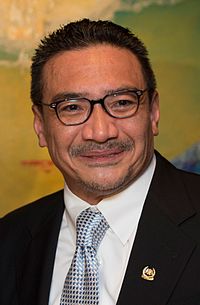On this day, 51 years earlier, a young Army officer walked out of the jungle in Kota Tinggi, Johor, his 7.62mm self-loading rifle slung to his shoulder and his fatigues covered in mud.
He had just completed a risky mission to search for Indonesian guerillas who had killed nine of his platoon mates.
Although trained for urban settings, retired Lieutenant-Colonel (LTC) Daljeet Singh and his men were successful.
They killed and captured a number of the guerillas. Pictures of his men from 2SIR carrying the dead and captured guerillas have not been seen in decades.
The stories of the men who were at the front line in North Borneo (now called Sabah) and in the swamps of Pasir Laba have not been told often enough.
Even now, Mr Singh's voice cracks and tears well up in his eyes, as he recalls the day he had to break the news of a fellow soldier's death to the man's wife.
He said: "She (the widow) just collapsed before I could complete (what I had to say). This was extremely touching to me because I was only 24 years old at that time."
The soldier was one of the eight men killed in an ambush in Kota Tinggi. The remains of another soldier was found days later.
Mr Singh was then mortar platoon commander at 2SIR, which was part of the 4th Malaysian Infantry Brigade. Mr Singh and the rest of 2SIR were deployed at Kota Tinggi.
He said: "We were mainly trained for internal security roles. Later, we were sent for jungle training in Ulu Tiram, Johor, before being deployed at Kota Tinggi."
Recalling the ambush, Mr Singh said: "On Feb 28, 1965, one of our platoons, which was led by the platoon sergeant, a man named Sergeant Ahmad, was deployed in the jungle to search for some Indonesian saboteurs."
As evening fell and daylight faded, the platoon prepared to camp for the night at the foot of a hill called Bukit Lebam.
He said: "Unknown to them, Indonesian soldiers were observing them from higher ground and they later opened fire on the platoon.
"The platoon was caught off guard and eight members of the platoon, including Sgt Ahmad, were killed on the spot."
CAPTURED
Mr Singh said another platoon mate was taken prisoner by the Indonesians, but the remaining soldiers returned to the Company HQ.
He said they were all shaken by the news.
D Company 2SIR, under the command of Capt Mackintosh, was assigned the task of recovering the bodies of the ambushed soldiers.
His voice cracking, Mr Singh said: "We took the bodies back to Camp Temasek in Singapore (where 2SIR was located) and administered the burial rites."
On March 3, 2nd Lt Singh's mortar platoon was airlifted by helicopter from Seletar Airbase to Kampong Bahru, Johor. The next day, acting on information from a villager, they encountered the Indonesians infiltrators. There was a hail of bullets and one guerilla was killed.
Four other Indonesian infiltrators were killed in another encounter on March 6 and another two were killed on March 12.
But he wasn't done.
"Our Commanding Officer did not want to return without finding out what had happened to the ninth soldier, the one who was taken prisoner by the Indonesians.
"The villager said the Indonesians shot him about two days after he was captured and left his body along the jungle route where the other eight soldiers were ambushed," said Mr Singh.
"We retraced our steps along the route and found his remains along the route."
Mr Singh said the Indonesian infiltrators were well-trained and disciplined.
He said: "They had been brainwashed into thinking that Malaysia was ready for an uprising and that the people were waiting for the Indonesians to liberate them from the British.
"But the reality was actually the opposite."
The tragedy may have taken place 51 years ago. But for soldiers who were there, the hurt remains.
He chose SAF instead of medicine
The medals in his Bukit Timah Road home speak volumes of a military career spanning over 30 years.
Mr Daljeet Singh, 75, proudly showed his Independence Medal, his 30-year Long Service Medal, his 25-year Long Service Medal and the medal he received for his role as an army officer during the Konfrontasi period.
He recalled how he became a soldier after finishing his Senior Cambridge exams (the O-level examinations-equivalent of his time) in March 1959.
"My father wanted me to study medicine in India, which I was unwilling to do," he said.
Several months after his exam results were released, one of Mr Singh's former teachers learnt about the formation of the Singapore Military Forces, in anticipation of eventual self-government for Singapore in 1959.
Mr Singh said: "My former teacher advised me to consider soldiering as a career.
"So I joined First Battalion, Singapore Infantry Regiment (1SIR) in July 1959 as a recruit. I was commissioned as a Second Lieutenant in July 1962.
"When Singapore joined Malaysia, 1SIR and 2SIR became part of the Malaysian armed forces."
Before retiring from the SAF, Mr Singh held several appointments, including Brigade Group Commander, HQ 21SIB from 1981 to 1991.
After his retirement, the grandfather of three spent 10 years working for the Singapore Technologies group.
His experience during Konfrontasi affirmed his belief in National Service.
He said: "We have a unique history and Singapore had a unique birth. What we have is worth defending." (aruljohn@sph.com.sg)
.jpg)



